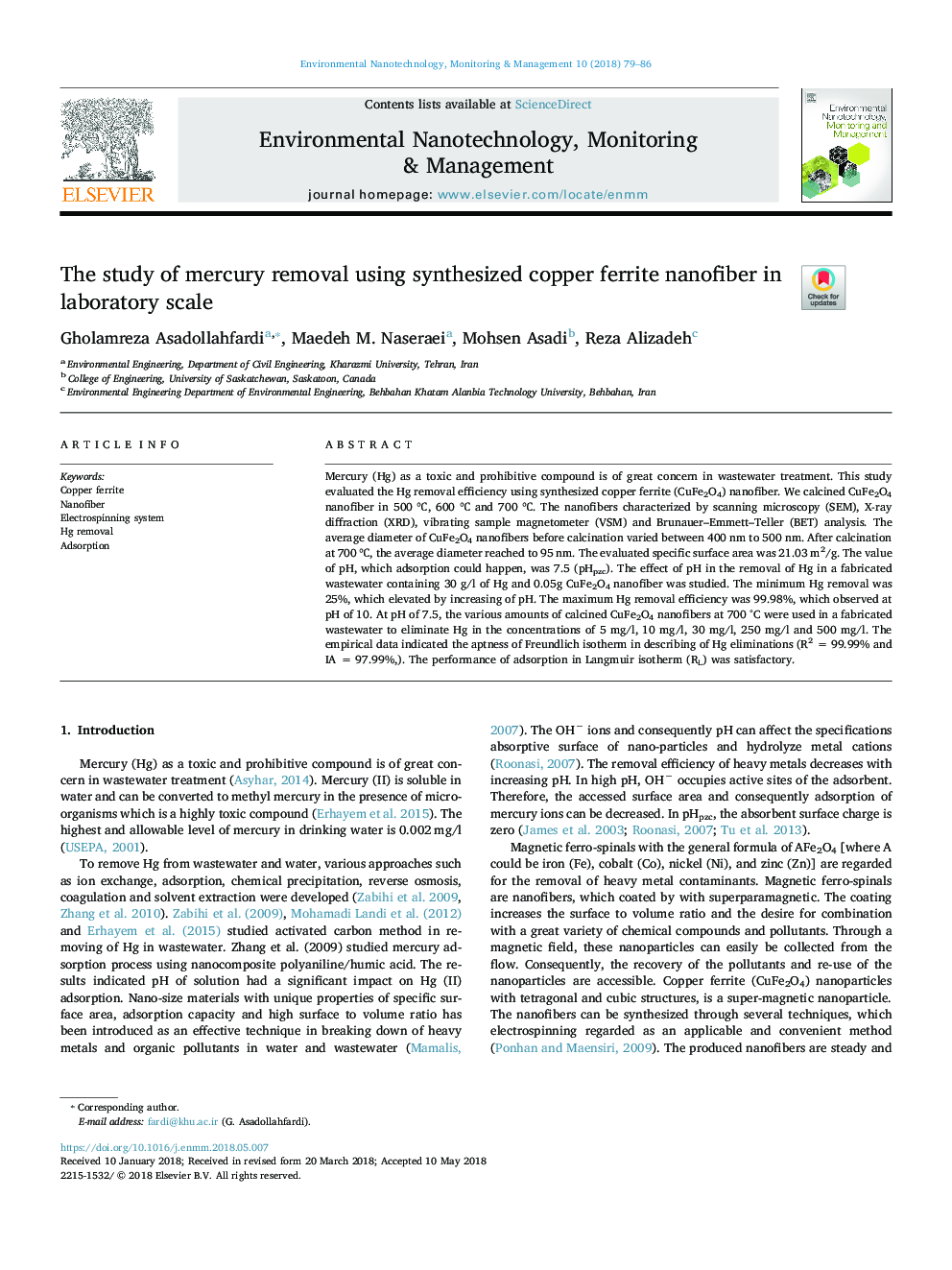| Article ID | Journal | Published Year | Pages | File Type |
|---|---|---|---|---|
| 8855587 | Environmental Nanotechnology, Monitoring & Management | 2018 | 8 Pages |
Abstract
Mercury (Hg) as a toxic and prohibitive compound is of great concern in wastewater treatment. This study evaluated the Hg removal efficiency using synthesized copper ferrite (CuFe2O4) nanofiber. We calcined CuFe2O4 nanofiber in 500 â, 600 â and 700 â. The nanofibers characterized by scanning microscopy (SEM), X-ray diffraction (XRD), vibrating sample magnetometer (VSM) and Brunauer-Emmett-Teller (BET) analysis. The average diameter of CuFe2O4 nanofibers before calcination varied between 400 nm to 500 nm. After calcination at 700 â, the average diameter reached to 95 nm. The evaluated specific surface area was 21.03 m2/g. The value of pH, which adsorption could happen, was 7.5 (pHpzc). The effect of pH in the removal of Hg in a fabricated wastewater containing 30 g/l of Hg and 0.05g CuFe2O4 nanofiber was studied. The minimum Hg removal was 25%, which elevated by increasing of pH. The maximum Hg removal efficiency was 99.98%, which observed at pH of 10. At pH of 7.5, the various amounts of calcined CuFe2O4 nanofibers at 700 °C were used in a fabricated wastewater to eliminate Hg in the concentrations of 5 mg/l, 10 mg/l, 30 mg/l, 250 mg/l and 500 mg/l. The empirical data indicated the aptness of Freundlich isotherm in describing of Hg eliminations (R2 = 99.99% and IA = 97.99%,). The performance of adsorption in Langmuir isotherm (RL) was satisfactory.
Related Topics
Life Sciences
Environmental Science
Environmental Chemistry
Authors
Gholamreza Asadollahfardi, Maedeh M. Naseraei, Mohsen Asadi, Reza Alizadeh,
